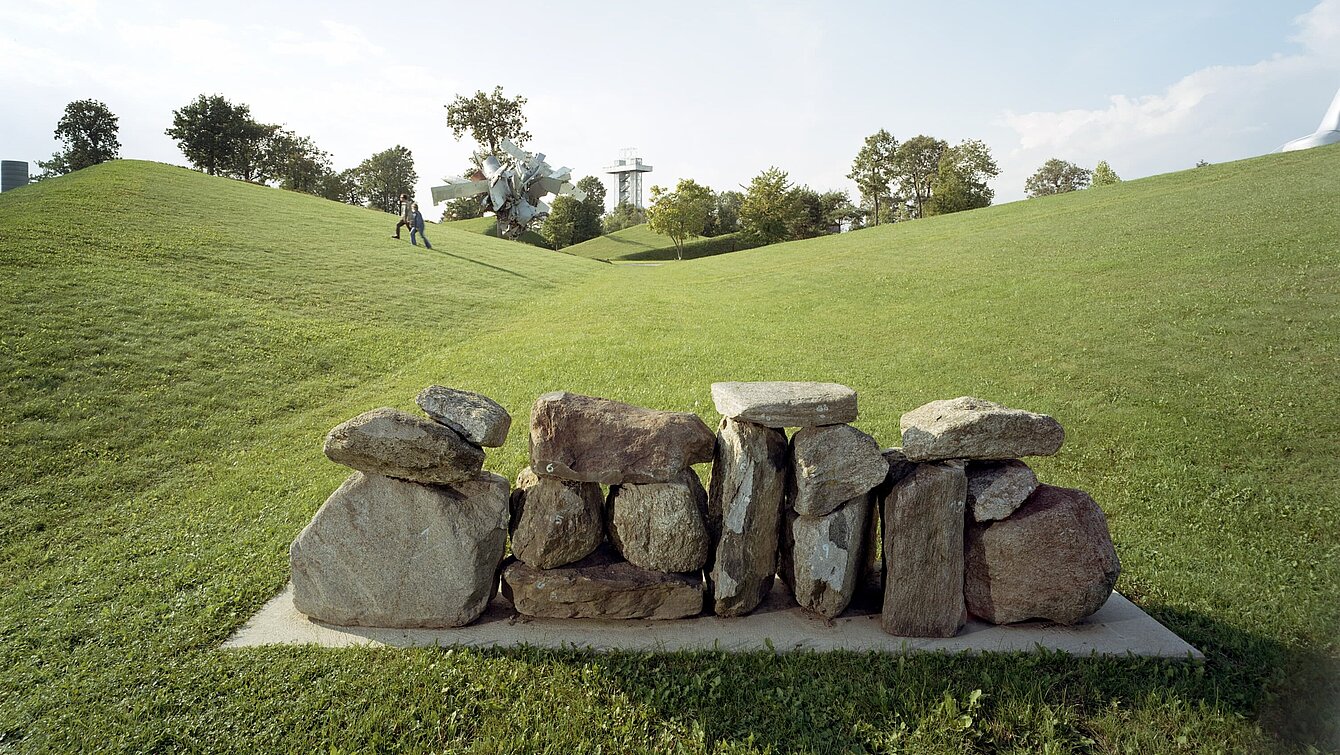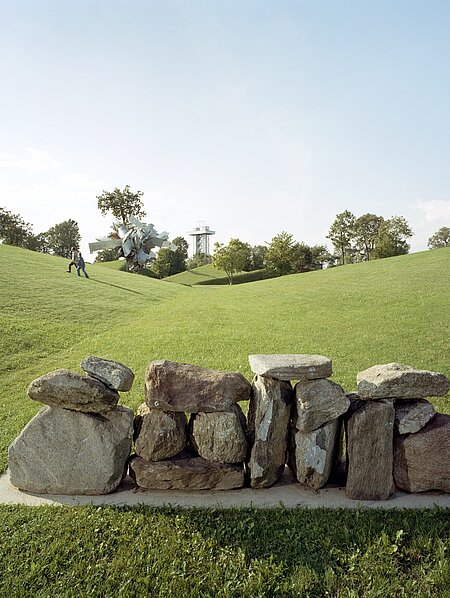First there were the cairns in the Alps or the stupa-shaped stone towers on the Tibetan plateau: the wall is what encloses yet at the same time divides, and therefore organises space. Weinberger’s Mauer does not enclose the landscape—instead, the compact heap of stones acts as a memorial that divides the surroundings. Stones of different sizes are numbered like building blocks, so that the natural accumulation is overwritten by a man-made order.
Stonewall
Lois Weinberger, 1992


Image Credits
Artist biography
Elisabeth von Samsonow
Sculpture overview
Position 22
Owner
Universalmuseum Joanneum
Artist biography
Lois Weinberger
Show all
About the sculpture
First there were the “cairns” in the Alps, the stupa-shaped stone towers on the Tibetan plateau, and the landscape-dominating stone walls around multi-levelled gardens. The wall is all-embracing, but at the same time seceding, and therefore organises the space: a sculpture in the true sense of the word.
Here a wall, there a garden: this is true for paradise, too. There can be no yearning for this “nature” to transform itself into art or to merge into it, given that nature itself possesses enough power of shape, organicity, structural design, structures and the capacity to improve its approach. It is a techno-artist, delivering its sculptures to the world in live form. It is at work with the Earth’s elements, which is the reason why the human sculptor often feels small when faced with its material.
Weinberger has taken the analysis of the “garden” – including the plants and living things which exist within it – as the theme of his artwork, and in doing so has relocated the gallery walls, to an extent. The “outside” is restricted by a cultural “inside area”, an area of description, mapping and identification. This theme leads to the “outdoor sculpture” being a commensurate task.
A “wall” exists as an ordering of stones of varying sizes, whereby the addition or counting of these numbered stones exceeds their simple stacking up. The artist becomes an epi-technician who uses technology – which nature has controlled for an eternity – second of all, and who codifies the material with a logos.
Instead of using a million numbers which would remind us of the age of the stones, they are identified as if in an instruction manual for a building block game. All the stones are piled up onto a plinth as a memorial, placed facing the landscape which they cannot surround, although the title suggests this. This “wall” does not enclose the landscape: rather it excludes it, by being found within it.


















